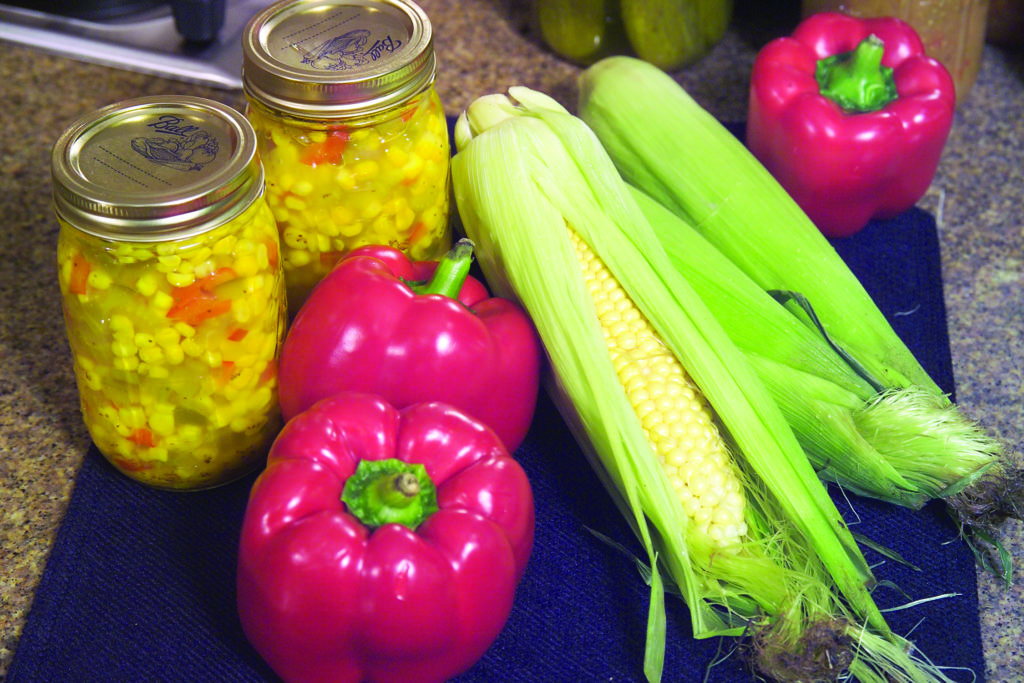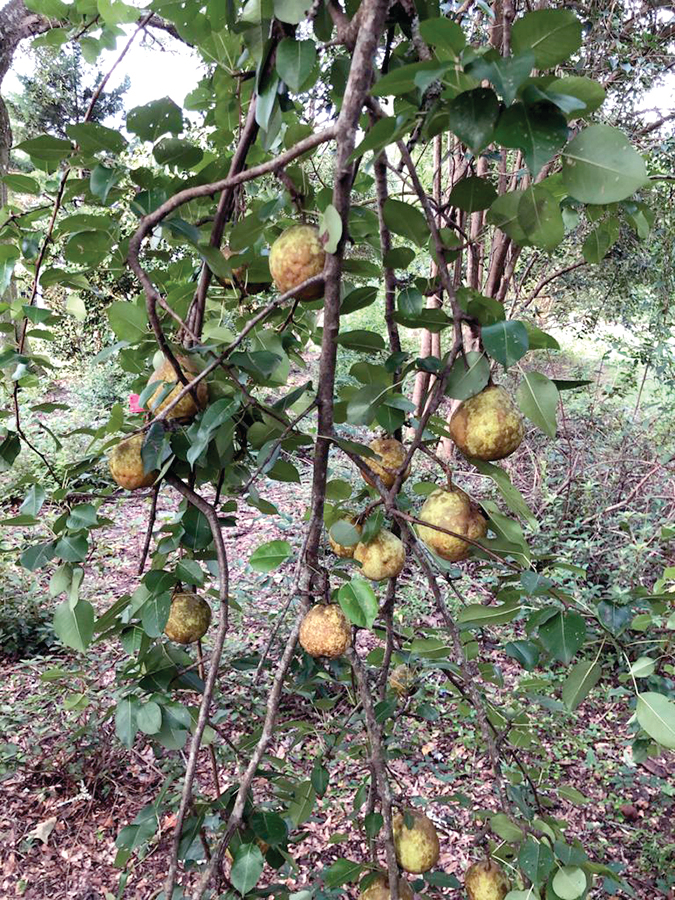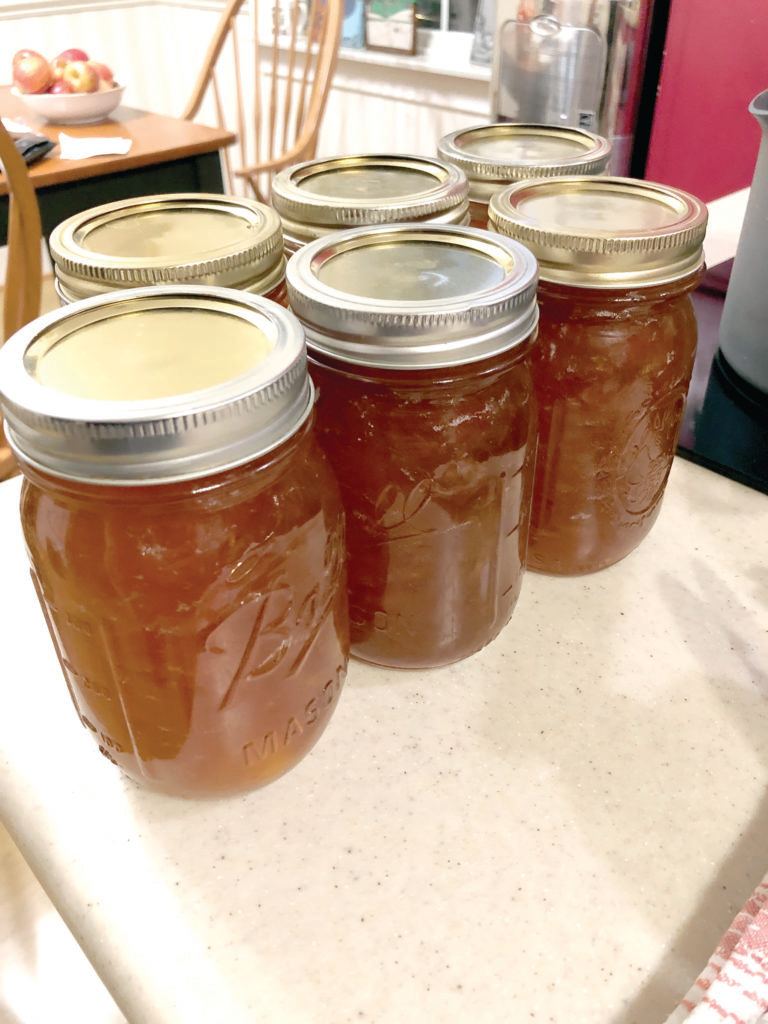By Pamela A. Keene

Courtesy National Center for Home Food Preservation-UGA
There’s nothing better than using home-canned tomatoes in an Italian recipe or pulling out a quart of fresh-frozen peaches to make a bubbly cobbler. However, if the only thing you know about food preservation is your grandmother’s jam-making on a hot summer afternoon, you’ve got a whole lot of catching up to do.
“People have been preserving food for centuries, but as we learn more about foodborne illness and spoilage, and changes in our food supply and developments in canning equipment take place, recommendations are updated frequently to provide reliable ways to safely reap the bounty of our garden’s harvest,” says Elizabeth Andress, Ph.D., director of the National Center for Home Food Preservation and food safety specialist with the Georgia Cooperative Extension. “Food preservation knowledge and techniques need to be based on sound food science for safety; we’re still targeting the same bacteria in canning as we have for a long, long time.”
From the garden to the table, food handling and kitchen hygiene standards are crucial to successful food preservation. Because ongoing research reflects updated methods, Andress strongly suggests that consumers use the most recent information available.

Courtesy National Center for Home Food Preservation-UGA
Canning basics
Preserving food by canning presents several options. “Each has its benefits and drawbacks, but in any case, it’s important to follow the instructions exactly and familiarize yourself with each before attempting to can at home,” Andress says. “An important consideration for choosing the proper canning technique depends on the acidity of the food you’re canning. For instance, higher-acid foods like fruits can be processed in a water-bath canner. But foods with a lower acid content, such as meats and soups, must be preserved using a pressure canner.”
Some foods, such as tomatoes can be preserved using a water-bath, but it’s important to add citric acid or lemon juice to acidify them. Pickles, because of the added vinegar, can also be canned using a water-bath if a tested recipe is followed.
“For a beginner, we suggest canning peaches or making applesauce to become comfortable with the equipment and the process,” Andress says. “Both use the water-bath method, which involves placing filled containers into a large pot of boiling water that covers the whole jar and lid and boiling them for the exact time shown in the recipe. Whenever canning, we recommend using a tested recipe from a reliable source, such as the National Center for Food Preservation.”
Yellow peaches can be peeled, cut into halves or slices, packed into jars then covered with water or sugar syrup before putting on the lids and placing into the boiling water.
“Choose between raw pack or hot pack when you fill the jars,” she says. “With the raw pack, put the freshly peeled and slice peaches into a clean hot jar, then cover with hot syrup. Hot-pack canning means that you cook the peaches in syrup first, then fill the jars with the hot fruit and liquid before processing.”
Applesauce can be processed using a water bath as well. Use the hot-pack method for filling the jars.
“When putting on the lids, be sure to wipe the jars’ sealing edges with a clean, damp cloth to remove bits of food that may prevent the jars from sealing properly,” Andress says.

Freezing
Certain foods freeze better than others. “Many vegetables are not suited for freezing, such as cucumbers, radishes, raw potatoes or onions,” Andress says. “On the other hand, vegetables like green beans and asparagus, and fruits like blueberries or peaches are easy to freeze.”

Green beans, corn, carrots and broccoli need to be blanched—submerged in boiling water for the prescribed time on the recipe—before freezing. Then they can be transferred to an ice bath for rapid cooling, drained and packed into containers.
“Once they’re blanched and drained, place them in a single layer on a cookie sheet and freeze them individually,” Andress says. “Then pack into freezer-safe containers, label and store.”
Fruits such as blueberries, cherries, grapes, fresh sliced peaches and strawberries can simply be placed on cookie sheets and allowed to freeze individually before packing. Remove as much air as possible before sealing.

“Fruits can be frozen with or without added sugar or liquid, depending on what you plan to use them for,” she says. “Freezing can be an easy way to preserve food. However, the same safe-handling guidelines apply. Keep your work surfaces clean, wash your hands often and carefully label the packages with the date processed and the contents.”
Herbs can be frozen as well.
“If you grow basil or oregano in the summer, just chop the fresh leaves and put them into ice-cube trays covered with water,” she says. “Once they’re frozen, package them in a freezer-safe container, then when you need some herbs for soup or a sauce a recipe, take out the frozen cube and add it to the sauce. You can also do this for smaller quantities of hot peppers or onions.”
Getting back to kitchen basics
Canning and freezing have long been used to preserve food. Today’s conveniences have made it easier to enjoy the rewards of growing your own food long after the harvest is over.
“Because of the pandemic, more and more people are turning to home food growing and preservation,” she says. “Just be certain to follow all the guidelines and recipes exactly. Don’t take any shortcuts or change ingredients or timing. The recipes we provide through the National Center for Preservation have been extensively tested. The key is to be meticulous, whether you’re canning or freezing. That way you can be assured of the freshest flavors and the safest results.”
Resources:
Alabama Cooperative Extension System, aces.edu. The Extension System has a number of videos on food preservation and often does live events on its Facebook page at facebook.com/acesfoodsafety.
USDA Complete Guide to Home Canning, nchfp.uga.edu/publications/publications_usda.html
National Center for Home Food Preservation, how-to information, plus recipes for canning, freezing, making jams, jellies and pickles, nchfp.uga.edu




